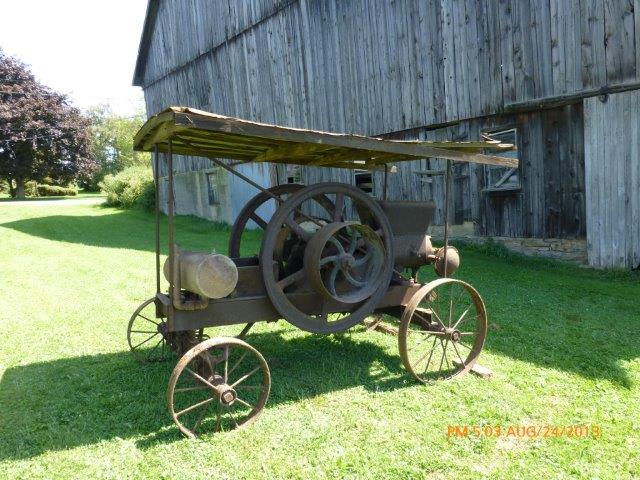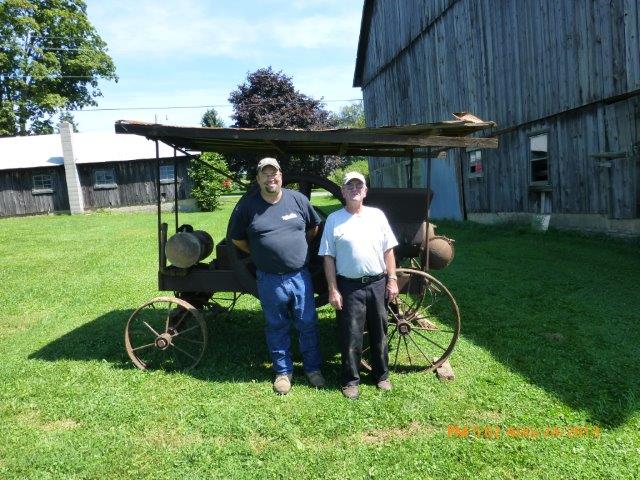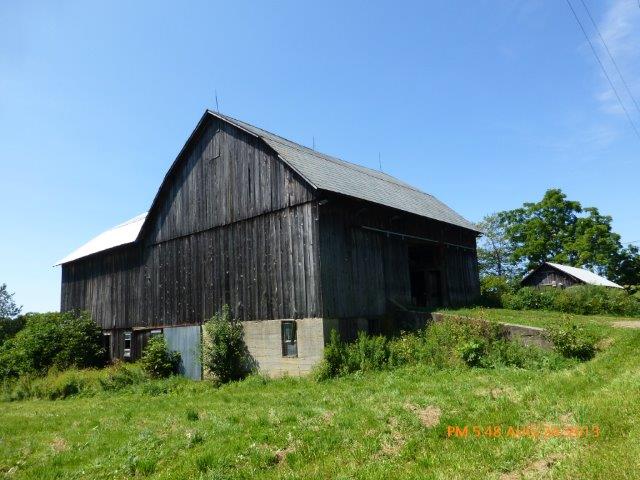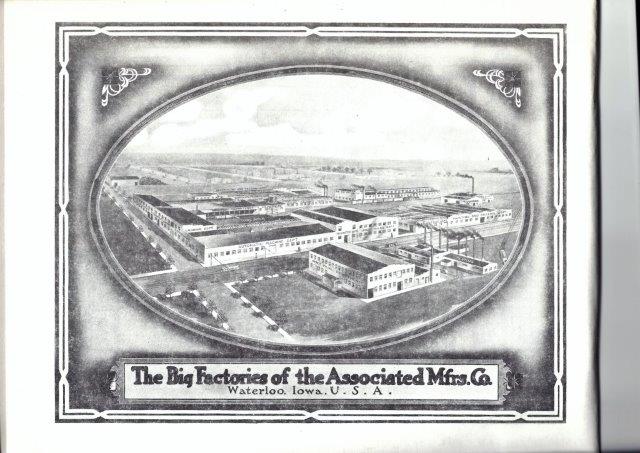
October 2013
The Engine from Paradise
By Paul Harvey
During the Summer of 1967, I worked in DuBois and
frequently took various back roads home; always looking for some engine
"goodie." One afternoon, I was passing through a farming crossroads
community called
That weekend, Kevin and I made a trip to
Photo 2 shows Rod Jr. and Rod Sr. posing
with the engine. Rod Jr. related that his great grandfather, Jacob,
purchased the engine brand new and it had always been used on the farm.
They were very proud of this two ton machine and always stored it
inside. In use, they would place the threshing machine in the barn and
back the engine onto ramps on the barn bridge to level it. It would
then be belted to the thresher which could blow the straw from the grain
high into the lofts of the huge barn. The grain would then be stored in
the granary, which was a rodent proof (hopefully) part of the barn. The
engine then was owned by grandfather, Lyle, then Rod Sr. and now Rod
Jr. Little Darren was running around trying to help. Five generations
living in
As Kevin and I carefully examined the engine, we realized that Associated did not provide a canopy over their engines but this one had a roof. Note Photo 3. Rod explained that Jacob was also a blacksmith and had fabricated the roof from his own design. It is a beautiful accomplishment with precision forged supports and curved beams supporting the roof. The factory could not have done better. It will always retain this canopy.
Photo 4 shows the Pifer homestead where
five generations have lived. It commands a beautiful view of
This engine was built by Associated Manufactures Co. of
Waterloo,
The Associated engines all had unique names ranging from the small, air cooled, 1 1/2 hp "Busy Boy." The next size was the "Chore Boy," progressing to the "Hired Man," "Farm Hand," and the "Mule Team" series of larger engines. Our engine is the Associated Portable "Twelve Mule Team" translating to 12 hp! Our engine sports an eight inch cylinder bore with a 13 inch stroke and is rated at 250 rpm. A reprint shows this engine in Photo 7. These were painted bright red with a silver cylinder and very attractive. Note that it originally cost $395.00 with the magneto being a $10.00 option. Quite an investment for the farmer in 1910.
After its long rest, the engine came to life on September 6. Doug and Nate spent two days cleaning and giving meticulous attention to restoring the battery box, fuel tank and ignitor to look exactly as it was on the farm. It will not be painted but just oiled to preserve the patina as it was found. They are shown in Photo 8 after a successful run. It will be in operation at the Fall Show for all to see and enjoy!

Photo 1: The Associated engine as found

Photo 2: Rod Jr. and Rod Sr.

Photo 3: The homemade roof over the engine

Photo 4: The Pifer homestead

Photo 5: The barn where the engine worked

Photo 6: Associated factories in Waterloo

Photo 7: An advertisement for the Associated engine

Photo 8: Doug and Nate with the engine after a successful run